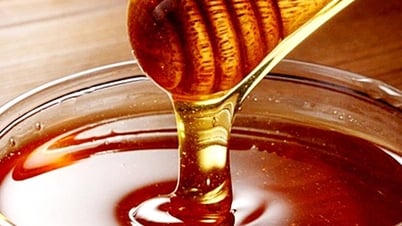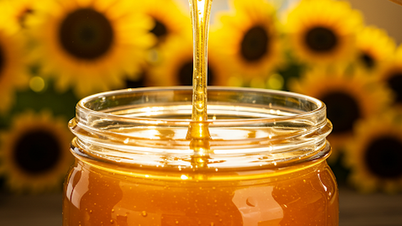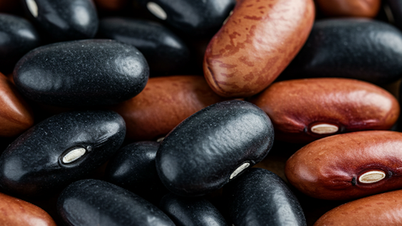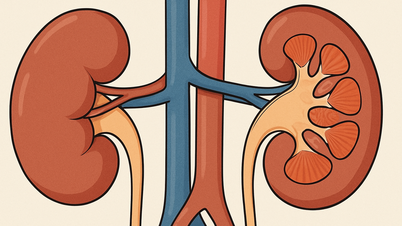Coffee can contain high levels of compounds that increase bad cholesterol (LDL cholesterol) levels in the blood, depending on how it is brewed, according to Science Alert.

How you make coffee is related to bad cholesterol levels in the blood - Photo: CANVA
Diterpenes are compounds produced by plants that have various effects on the human body. Two of them – cafestol and kahweol – have been linked to increased levels of bad cholesterol. High levels of these compounds have been found in coffee, depending on how it is brewed.
Bad cholesterol increases due to the way coffee is made
Swedish researchers measured diterpene levels in coffee brewed using a variety of popular machines and brewing methods. They found that boiling a large pot of coffee produced the worst results. Conversely, these compounds can be easily reduced by filtering the coffee.
Coffee makers commonly used in workplaces around the world also produce coffee with relatively high diterpene content.
Samples from each method and brewer were frozen for storage and shipping, prior to analysis for diterpene concentrations. In addition, the team collected four espresso samples from three coffee shops and one workplace.
The researchers found that manual brewing methods generally produced lower levels of diterpenes than machine-brewed coffee, whether using a conventional brewer, a liquid espresso machine, or a traditional espresso machine.
"We studied 14 coffee makers and found that coffee brewed from these machines had much higher levels of diterpene compounds than coffee brewed from drip brewers using conventional filters," said David Iggman, a clinical nutritionist at Uppsala University.
"From this, we infer that the filtration process is related to the levels of LDL cholesterol-raising substances in coffee."
Coffee from a conventional brewer averaged 174 mg/L of cafestol and 135 mg/L of kahweol. The best option seemed to be paper-filtered drip coffee, with an average of just 11.5 mg/L of cafestol and 8.2 mg/L of kahweol.
Boiled coffee is an unfiltered brewing method, popular in some countries such as Sweden. Brewing coffee this way results in very high average concentrations, close to 940 mg/L of cafestol and close to 680 mg/L of kahweol.
Adding to the rich body of research on coffee
Fortunately, there is a simple way to reduce the levels of harmful compounds. When the researchers filtered boiled coffee through cloth, the concentrations were just 28 mg/L of cafestol and 21 mg/L of kahweol. They used a sock as a filter, but any cloth or paper filter will do.
The researchers also acknowledged that the study had major limitations, including the small sample size and uncontrolled variables such as filter pore size, water pressure, temperature, and how the coffee beans were roasted and ground.
The findings add to a growing and sometimes conflicting body of research on the health effects of coffee. Other studies have shown that drinking three or more cups of coffee a day can reduce the risk of heart disease by up to 40%.
Regular coffee drinking has also been linked to a lower risk of dementia, Parkinson’s disease, and cancers of the skin, mouth, and colon. Coffee can help reduce the negative effects of sitting for long periods of time and even add years to your life. But it all depends on how many cups you drink each day, when you drink it, and now, how you prepare it.
“Most coffee samples contained levels of diterpenes that may influence drinkers’ bad cholesterol levels, as well as their future risk of cardiovascular disease,” said Iggman. The study was published in the journal Nutrition, Metabolism and Cardiovascular Diseases .
Source: https://tuoitre.vn/pha-ca-phe-cach-nay-se-khien-muc-cholesterol-xau-tang-cao-20250328131922931.htm


![[Photo] Nghe An: Bustling atmosphere celebrating the 50th anniversary of Southern Liberation and National Reunification Day](https://vphoto.vietnam.vn/thumb/1200x675/vietnam/resource/IMAGE/2025/4/29/64f2981da7bb4b0eb1940aa64034e6a7)
![[Photo] Hanoi is brightly decorated to celebrate the 50th anniversary of National Reunification Day](https://vphoto.vietnam.vn/thumb/1200x675/vietnam/resource/IMAGE/2025/4/29/ad75eff9e4e14ac2af4e6636843a6b53)

![[Photo] Ho Chi Minh City residents "stay up all night" waiting for the April 30th celebration](https://vphoto.vietnam.vn/thumb/1200x675/vietnam/resource/IMAGE/2025/4/30/560e44ae9dad47669cbc4415766deccf)
![[Photo] Ho Chi Minh City: People are willing to stay up all night to watch the parade](https://vphoto.vietnam.vn/thumb/1200x675/vietnam/resource/IMAGE/2025/4/29/cf71fdfd4d814022ac35377a7f34dfd1)
![[Photo] General Secretary attends special art program "Spring of Unification"](https://vphoto.vietnam.vn/thumb/1200x675/vietnam/resource/IMAGE/2025/4/29/e90c8902ae5c4958b79e26b20700a980)
























![[Photo] Prime Minister Pham Minh Chinh meets to prepare for negotiations with the United States](https://vphoto.vietnam.vn/thumb/1200x675/vietnam/resource/IMAGE/2025/4/29/76e3106b9a114f37a2905bc41df55f48)




































































Comment (0)